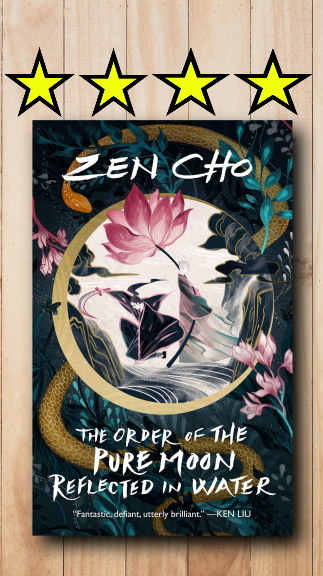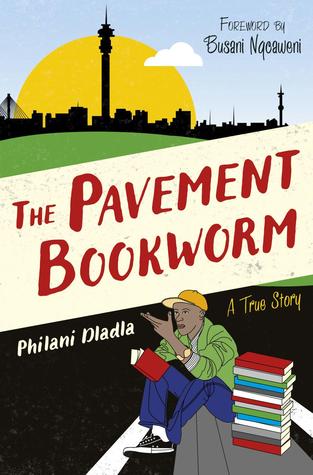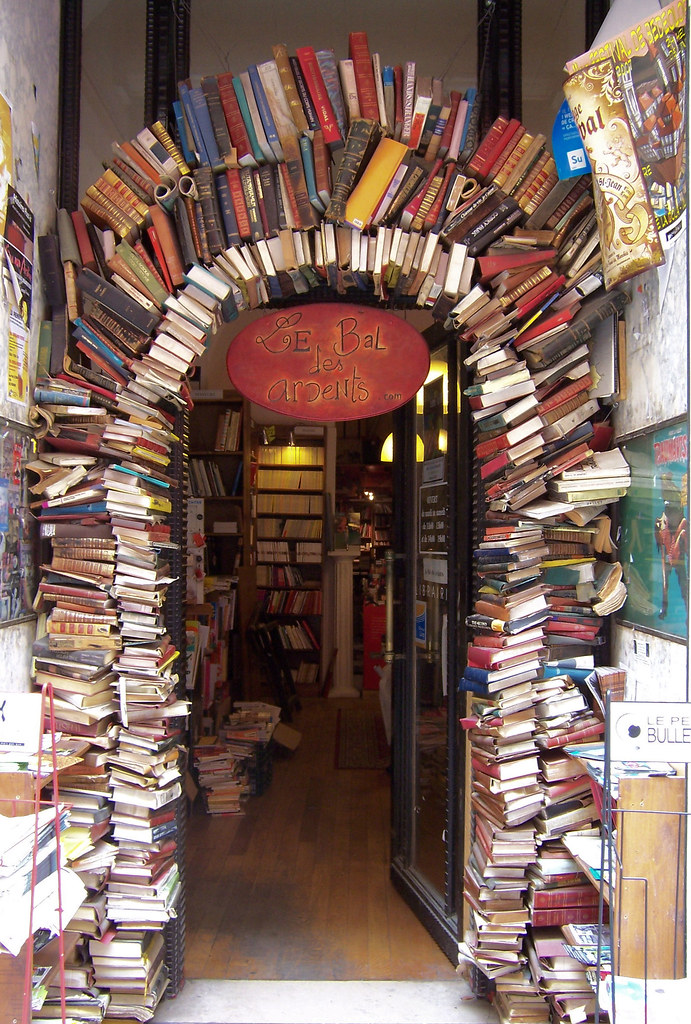
What up book nerds! I realize I’ve been quiet for a week or more now, but we had a hot water heater breathe its last breath (gurgle its last….gurgle?) and I’ve been helping my husband with the fallout projects. I’m getting a new laundry area out of the deal, so it felt appropriate to pitch in.
Unfortunately because I’ve been doing that, I haven’t had as much time to read as I normally do, and I’ve been reading some truly monster-sized books, so my forward progress on my book goals for the year is basically nil. I did, however, have an ARC opportunity fall in my lap for Zen Cho’s The Order of the Pure Moon Reflected in Water thanks to NetGalley and MacMillan Tor/Forge publishing, and I couldn’t pass up a cover like that. It’s gorgeous. Fortunately it was also a short novella (I think it came in at 160 pages or something like that), so I was able to knock it out in a few days.
The book blurb claimed it was for wuxia fans, but I found very little wuxia in the actual book. For people who are unaware of what the wuxia genre is, it’s a Chinese word literally translated as “martial heroes” and encompasses martial arts adventures. Think Crouching Tiger, Hidden Dragon, or any other movie/book you’ve read where the weapons and moves are all named, the action is exaggerated and fantastical, and sometimes there’s some humor involved. This novella had very little of any of that, but despite not getting what I was expecting, I greatly enjoyed my time with this book. Where I expected fantastical fight scenes, I got a quiet and thoughtful story about motives, relationships, theology, and what makes a family. The author also includes some LGBT themes which I think were handled well. I’m taking great care to not leave spoilers here, but I will say that I found the ending touching and a satisfying conclusion to this short novella.
In terms of shortcomings, I will say that this book was light on descriptions and details. Places, actions, and characters are all very minimally introduced and described, which sometimes made it difficult for me to “see” how things were playing out. Things also (by novella necessity, I guess) play out rather quickly, and some character developments and motives take place more rapidly than maybe is believable. I found it easy to overlook a lot of these flaws, though, because I was enjoying the novella so much.
I rated this 4 stars on Goodreads for how much I enjoyed it despite not finding the wuxia elements I expected based on the blurb. I took a star off for those missing elements, and also the minor shortcomings I pointed out above. If anything I’ve said here sounds interesting to you (even if it’s the cover art alone), I recommend giving this novella a try. Let me know what you think!















